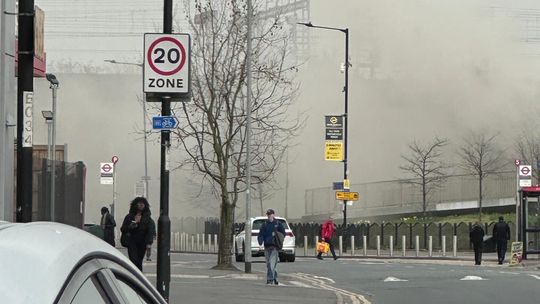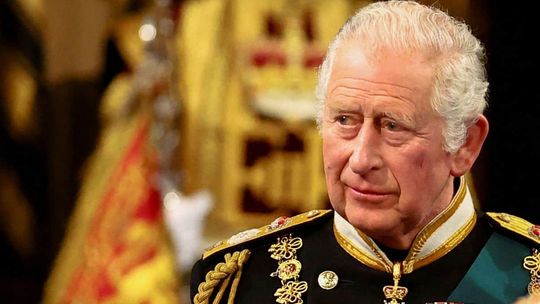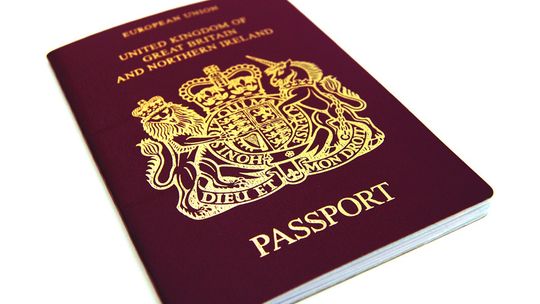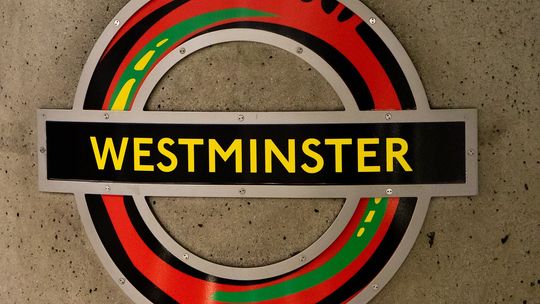The Friendship Highway is definitely not a highway. It’s hardly even a road by most definitions, but a rough dirt track that begins in Kathmandu, traverses the steep terraced valleys of Nepal, climbs over the highest mountain range in the world, the Himalayas, weaves through the desolate high-altitude desert of the Tibetan plateau, and ends in Lhasa, the mythical capital of Tibet. It takes a week to make the thousand-kilometer journey, sometimes driving as much as twelve hours a day.
Our Tibetan guide (let’s just call him Tashi to keep him out of trouble with his wife) met us at the border with Tibet. Striding around confidently with an air of authority, he seemed to know all the officers at the border, as well as every official in every town between Lhasa and Kathmandu. Surprisingly for a guide, Tashi showed little enthusiasm for explaining the sights that we passed. But he showed plenty of enthusiasm for talking about himself (especially with some of the women in our group).
During the long days on the road, I had plenty of time to get to know the other travelers in our group. Andy was a young, successful currency trader from London who got ripped off by an equally successful Chinese moneychanger at the border, exchanging British Pounds for Chinese Yuan at half the official rate. He also had an insatiable curiosity, firing a never-ending series of questions at our guide, to which he usually received a less than satisfactory response. „Tashi, how high is that mountain?” („I don’t know.”) or „Tashi, why is the color of that lake turquoise?” („Minerals.”)
When he wasn’t questioning Tashi, Andy spent most of his time talking to Javier, a technology consultant from Madrid with a particular aversion to Tibetan food. „Fried rice with vegetables or friend noodles with vegetables?” It was the same choice every night. „Paella! I want paella,” he protested fruitlessly.
Nathalie had a passion for piano, teaching piano lessons to a handful of students in her native France. She wore her hair in girlish braids and spoke with a French accent that transformed everyday items into erotic sexual objects. „Can I have your penis?” she asked once, gesturing toward a bag of peanuts. Her passion for piano was matched only by her passion for Tibetan men. While the piano wasn’t a common instrument in Tibet, remarkably Natalie finally found happiness in the arms of a young Tibetan piano student she met at disco in Lhasa.
Meanwhile, Jim and Gaby spent the long days on the road in deep philosophical discussions. „Is there such a thing as a selfless act?” was one of the many existential questions they debated.
As I pondered these and other philosophical questions, I watched the desolate landscape of the Tibetan plateau drifting backwards outside my window. In the soft evening sun, the barren mountains and valleys glowed in highlights and shadows. Nomads wrapped in filthy coats of leather and fur wandered the dry grasslands with a handful of sheep. Tiny villages lay scattered along the valley floor with plumes of smoke rising from medieval stone houses. Some of the villages were protected by walls covered with hand-pressed yak manure. In the dry wasteland of the Tibetan plateau, where natural resources are scarce, even this waste product is recycled, dried and used as fuel.
We shared the road with mule carts and tractors. Occasionally, we passed a run-down truck that choked and sputtered as it climbed a high-altitude pass, overflowing with a hundred dusty faces in the back. They smiled and waved cheerfully as we passed. For many Tibetans, this was still the only form of transportation between remote towns.
Life wasn’t easy in the back of a truck, but in the minibus we had our own problems. Five kilometers above sea level on the Tibetan plateau, the atmosphere contained only half the oxygen of lower elevations, leaving my lungs gasping for air and my head throbbing – the first symptoms of AMS, or acute mountain sickness. To help our bodies adjust to the altitude, our guide encouraged us to drink water – a lot of water – which created another interesting dilemma.
On our second day on the road, I was surprised to find two new passengers in our minibus: a pretty young Tibetan woman and her four-year-old son. They appeared to be Tashi’s friends and we were happy to give
them a lift.
Tashi seemed particularly pleased, spending the whole afternoon in the back of the bus chatting with our new passengers.
When I wandered into the kitchen of our guesthouse the next morning, I found Tashi sound asleep on one of the benches along the wall, apparently still recovering from drinking a little too much Tibetan whiskey the night before. He woke a few minutes later with a muffled grunt and lifted his blanket to get up. I looked over and saw the young Tibetan woman lying next to him – she had paid for the lift – and she wasn’t the last „hitchhiker” we picked up along the way.
While Tashi seemed to have his own personal morality, most of the people I met in Tibet were fiercely religious. Buddhism is much more than a system of belief to the Tibetans, it encompasses the entirety of their culture and constitutes the very essence of their lives. At one monastery we visited, I met an old woman with a creased leather face and deep-set eyes who offered butter lamps to show her devotion. At another, an old man discreetly revealed his most valued possession, a photograph of the Dalai Lama, strictly banned by the Chinese.
One of the most important spiritual centers in Tibet is the Tashilumpo monastery, standing on a steep mountainside overlooking the city of Xigatse. It’s a complex, rambling warren of chapels, shrines, and halls linked by mysterious alleyways and steep staircases. The day we arrived marked the first day of Saga Dawa, the holiest festival in Tibet, commemorating Buddha’s birth and enlightenment.
Thousands of pilgrims crowded the monastery to circumambulate an important temple. They walked around the temple clockwise in a hypnotic trance, reciting mantras and turning heavy copper prayer wheels as they passed. The most devoted pilgrims even prostrated around the temple, bowing down and lying on the ground with every step. Inside, the voices of a hundred monks echoed in a candle-lit room as they chanted in prayer to the heavy beat of a large drum.
Later that night, walking around after dinner, we heard a different kind of beat: disco. The pulsing rhythm of dance music emerged from a dark stairwell. Upstairs, in a small, dimly-lit nightclub, a group of girls danced to a Swedish pop song as a handful of people watched. They eyed us suspiciously when we walked in, but the bartender seemed unfazed. He looked up, smiled, and led us to a corner table. As we ordered a round of drinks, Nathalie pulled out her Tibetan phrasebook and started talking to two Tibetan men at a nearby table („What’s your name?” „How old are you?” „Are you married?”). Confused, but charmed nonetheless, they offered her a shot of Tibetan whiskey. Meanwhile, I picked up a microphone and tried to charm the crowd with some karaoke. No one understood the lyrics, but it didn’t take long for everyone to understand that I couldn’t sing. I quickly passed the microphone to someone else. And later, when Michael Jackson took over the dance floor, Jim taught some break dancing moves to a group of bewildered Tibetans.
Gazing out the window of our minibus the following afternoon, I was startled to see a Tibetan man jogging along the side of the road. Had the fitness craze finally reached Tibet? I looked around the bus and found everyone equally confused. Andy was about to ask our guide, „Tashi, why is that man jogging?” when we passed a small mule, also jogging along the side of the road. I suddenly realized: the man was chasing a runaway mule.
We decided to intervene. As our driver pulled alongside the frightened animal, Andy positioned himself in the front of the minibus. Holding on to the bus with one hand, he leaned out of the open doorway, waited, then jumped from the bus and grabbed the mule around the neck. When the breathless man finally caught up, he nodded his head a few times, gestured something with his hands, and then walked away with his mule, perhaps still struggling to understand exactly what had just happened.
These encounters are becoming more common as centuries old traditions collide with the realities of the modern world. Isolated in the heights of the Himalayas, Tibet remained closed to the influences of the outside world for hundreds of years. But today, in the fabled Himalayan kingdom, you’re equally likely to see someone holding a prayer wheel as a mobile phone. Nightclubs outnumber monasteries. Stores sell yak cheese and Oreo cookies. And the voices of Eminem and Britney Spears are heard more often than monks chanting mantras.
The following day, as we approached Lhasa, we passed the crumbling ruins of a monastery demolished by the Chinese. When the Chinese invaded Tibet in 1949, there were over six thousand such monasteries and temples throughout the country with over half a million resident monks and nuns. But the Chinese authorities soon realized that religion was the principal obstacle to consolidating their control of Tibet and these monasteries were systematically destroyed. By 1976, only eight remained.
Nowhere is the legacy of Chinese occupation more evident than in Lhasa. The city is a sprawling gray grid of mid-rise apartment buildings erected by the Chinese. During the last twenty years, in a final ploy to consolidate their power over Tibet, the government has encouraged millions of Chinese settlers to migrate to Tibet, offering attractive salaries, interest-free loans and other incentives. As a result, over 70% of the city residents are now Chinese.
Today, the Tibetan quarter is a segregated ghetto of crumbling heavy stone-walled homes, shops and businesses, zigzagged by stone streets. While the magnificent Potala Palace still towers above the city, it is no longer the religious and political nexus of Tibet. Largely abandoned since the Chinese occupation, it now functions as a tourist museum.
Our guide preferred not to talk about the effects the Chinese occupation. „I don’t like to talk about politics,” he jokingly evaded our questions, later explaining that the government didn’t allow him to talk about the Chinese occupation. But when someone once made the mistake of calling him Chinese, Tashi responded emotionally in a rare display of anger. „I am not Chinese,” he snapped back, „I am TIBETAN.”
Seven Days in Tibet
On the road from Kathmandu to Lhasa, Martin discovers that the modern Tibet is a fascinating land of contrasts where nightclubs outnumber monasteries and nomads carry cell phones.
- 26.08.2008 18:25 (aktualizacja 18.08.2023 04:55)
Reklama












Napisz komentarz
Komentarze